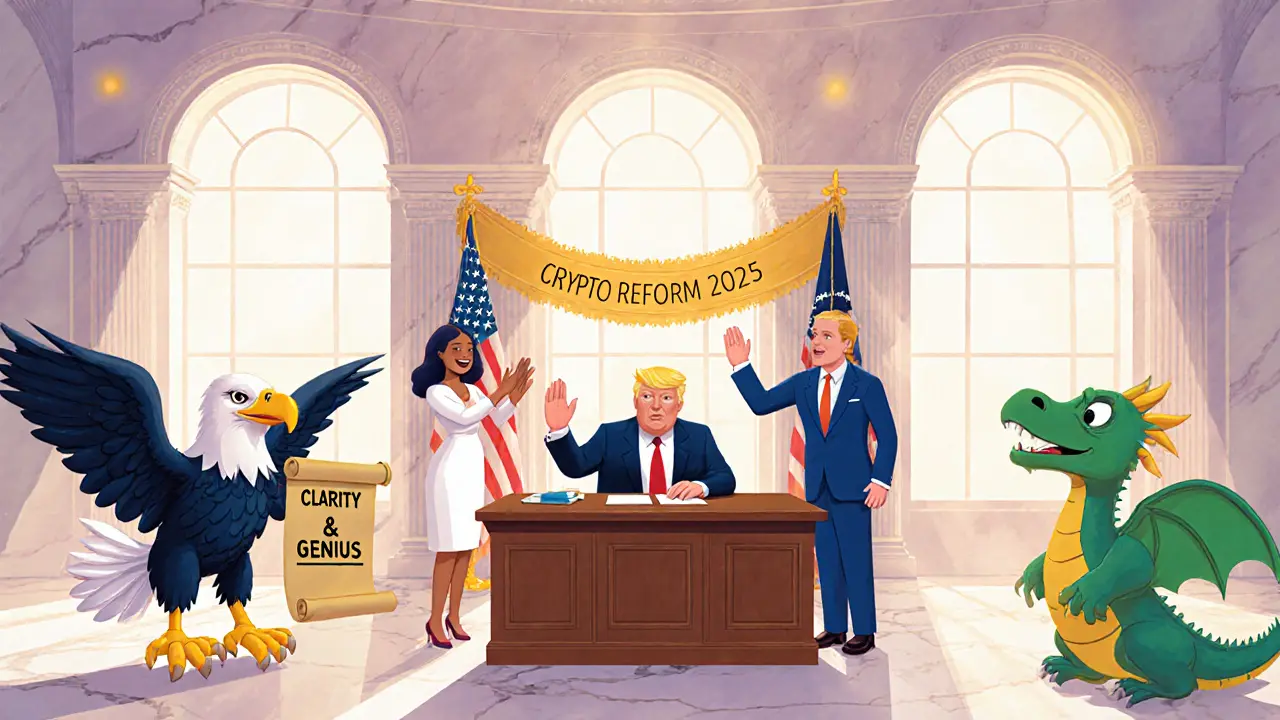Stablecoin Law: What It Means for Crypto Users
When dealing with Stablecoin Law, the body of legal rules that govern how stablecoins are issued, backed, and traded. Also known as stablecoin regulation, it sets the standards for transparency, reserve verification, and consumer protection.
One of the first things to grasp is that stablecoin law doesn’t exist in a vacuum. It connects directly to Stablecoins, cryptocurrencies designed to hold a steady value by pegging to fiat or assets, and to Regulatory Compliance, the process of meeting legal requirements such as licensing, reporting, and consumer safeguards. In practice, a stablecoin issuer must prove that its reserves match the tokens in circulation, and regulators may audit those reserves regularly.
Why the Law Matters: Risks and Protections
Stablecoin law aims to reduce the risk of a “run” where users lose confidence and try to redeem en masse. By mandating regular attestations and clear reserve ratios, the law creates a safety net that traditional crypto assets often lack. This protection also spills over to investors, because compliant stablecoins are less likely to be delisted or face sudden legal shutdowns. On the flip side, non‑compliant projects can attract penalties, forced shutdowns, or even criminal charges, especially when they blur the line between a stablecoin and an unregistered security.
Another key pillar is anti‑money‑laundering (AML) enforcement. Regulators pair stablecoin law with AML rules to track suspicious transactions and prevent illicit use. This means stablecoin wallets often have to implement Know‑Your‑Customer (KYC) checks, and large transfers may trigger reporting thresholds. For everyday users, that translates into a bit more paperwork, but it also means the ecosystem stays cleaner and more trustworthy.
Tax treatment is another layer that ties into stablecoin law. In many jurisdictions, stablecoins are viewed as property rather than currency, so every transfer can generate a taxable event. Some countries, however, are moving toward clearer guidance that treats certain stablecoins like fiat for tax purposes. Understanding the tax angle helps you avoid surprise liabilities when you move stablecoins between wallets or exchange them for other assets.
In addition to national rules, global standards are shaping up through bodies like the Financial Action Task Force (FATF) and the International Organization of Securities Commissions (IOSCO). Their recommendations often become the basis for local legislation, creating a semi‑uniform framework across borders. This global push is why you’ll see similar compliance checkpoints whether you’re using a US‑based stablecoin or a European one.
For developers and startups, stablecoin law also dictates licensing pathways. Some regions require a specific “stablecoin issuer license,” while others bundle it under broader crypto‑asset service provider licenses. The licensing process usually demands a business plan, audit reports, and proof of adequate capital reserves. Getting this right early can speed up market entry and build confidence with partners and users.
From a user perspective, the most actionable advice is to check a stablecoin’s compliance badge before you invest. Look for publicly available reserve attestations, audit reports from reputable firms, and clear KYC/AML policies. When a stablecoin is listed on a regulated exchange, that’s usually a good sign it meets the prevailing stablecoin law requirements.
All of these pieces—reserve transparency, AML checks, tax considerations, and licensing—form a network of rules that keep stablecoins functional and reliable. As the regulatory landscape evolves, staying informed helps you navigate the market safely and make the most of stablecoins’ low‑volatility benefits.
Below you’ll find a curated list of articles that break down each of these topics in detail, from the latest legal updates to step‑by‑step compliance guides. Dive in to see how stablecoin law affects everything from airdrops and token audits to cross‑border payments and DeFi integrations.
How US Crypto Laws Evolved in 2025: The CLARITY and GENIUS Acts Explained
Explore how the 2025 CLARITY and GENIUS Acts reshape US crypto regulation, defining digital commodities, investment contracts, and stablecoins.





